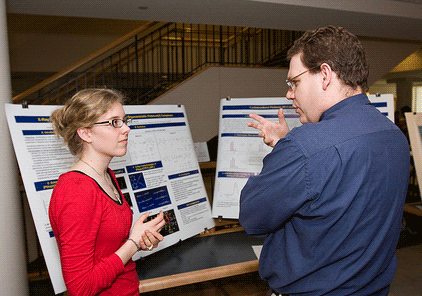Poster Title
Faculty Advisor
Josey Barton
Department
Biology
Abstract
The bacterial population of a bathroom is diverse end ever changing. Organisms can be transferred to surfaces by humans that have them as part of their normal flora, and from humans who have come into environmental contact with the organisms. Bacterial organisms such as Escherichia coli, Salmonella, Campylobacter, and Enterococcus are found in nature and commonly effect humans. Stapholococcus, especially S. aureus is a natural inhabitant of the human skin. Escherichia coli, Klebsiella, Enterobacter, and Citrobacter are all coliform bacteria found in human feces. All of these organisms are capable of spreading through hand to surface contact. Several studies have shown that many of these organisms are especially capable of proliferating on stainless steel surfaces. Hand washing is of crucial importance to reducing the spread of bacteria. However, busy university settings paired with occurrences of improper hand washing can provide a hospitable environment for bacteria. This study was interested in finding out how clean was the commonly used 2nd floor bathroom of Mendel Hall on the St. Catherine University campus. The study questioned whether students should be concerned about possible pathogens that can be transmitted from the bathroom. In order to examine these questions, this study sampled the stainless steel faucet handles of a sink in the 2nd floor bathroom. Samples were plated on selective and differential media to indicate possible pathogens. This study also examined the bioburden and microbial community dynamics over time.
Community Dynamics of Faucet Handles
The bacterial population of a bathroom is diverse end ever changing. Organisms can be transferred to surfaces by humans that have them as part of their normal flora, and from humans who have come into environmental contact with the organisms. Bacterial organisms such as Escherichia coli, Salmonella, Campylobacter, and Enterococcus are found in nature and commonly effect humans. Stapholococcus, especially S. aureus is a natural inhabitant of the human skin. Escherichia coli, Klebsiella, Enterobacter, and Citrobacter are all coliform bacteria found in human feces. All of these organisms are capable of spreading through hand to surface contact. Several studies have shown that many of these organisms are especially capable of proliferating on stainless steel surfaces. Hand washing is of crucial importance to reducing the spread of bacteria. However, busy university settings paired with occurrences of improper hand washing can provide a hospitable environment for bacteria. This study was interested in finding out how clean was the commonly used 2nd floor bathroom of Mendel Hall on the St. Catherine University campus. The study questioned whether students should be concerned about possible pathogens that can be transmitted from the bathroom. In order to examine these questions, this study sampled the stainless steel faucet handles of a sink in the 2nd floor bathroom. Samples were plated on selective and differential media to indicate possible pathogens. This study also examined the bioburden and microbial community dynamics over time.


Comments
This poster was a part of the Biology of Microorganisms class in which students performed independent semester-long research projects. The study ideas were thought up by the student research groups. No funding is available in the department to print these posters since all funding was used for supply resources.